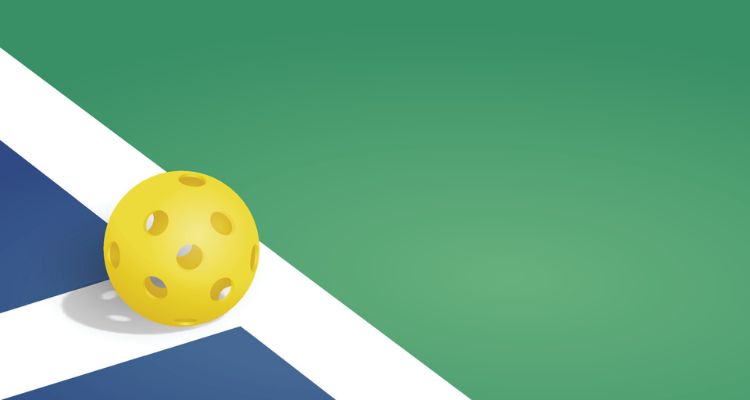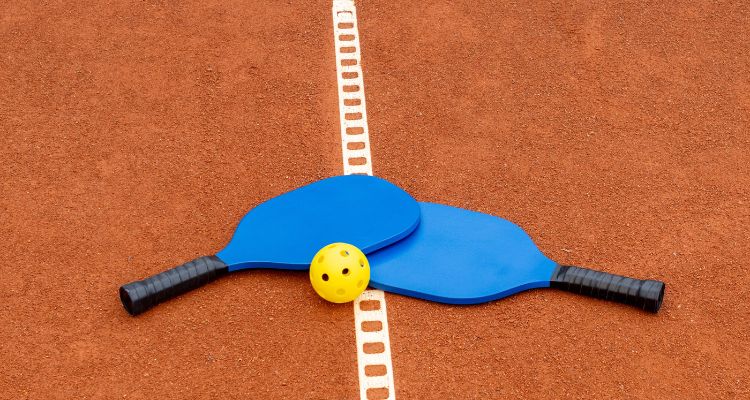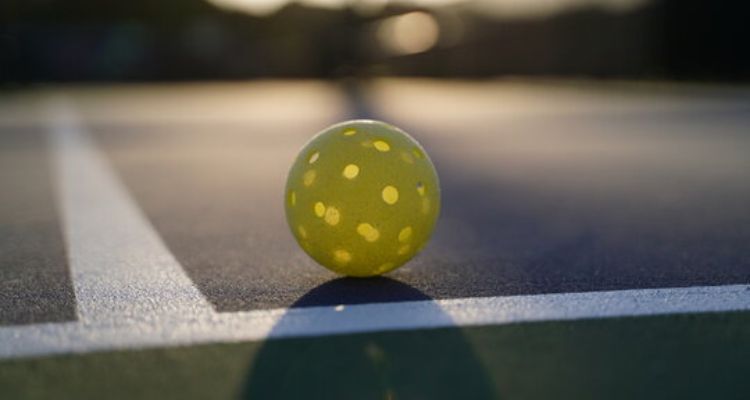If you are a pickleball enthusiast, you know how thrilling it is to hit a perfect shot that lands just inside the line. It’s a moment of pure joy and satisfaction. But we’ve all experienced those frustrating moments when a shot goes just outside the line. It’s a letdown, to say the least. And let’s not forget the disagreements and confusion over line calls that can sometimes arise with our opponents or partners. It’s enough to make your head spin!
But fear not! In this engaging article, we’re going to delve into the exciting world of pickleball line calls. We’ll explore how to make fair and accurate line calls, and how to handle any disputes or challenges that may come your way. So, get ready to enjoy pickleball confidently and honestly!

What Are Line Calls in Pickleball?
Line calls are simply verbal indications of whether a ball hit within or outside a line. They are crucial in determining whether the rally continues or ends with a point or a fault. For example, if a player shouts “out,” it means the ball has traveled beyond the line and out of fair play. It’s game over for that shot!
But wait, there’s more! Let’s talk about line calls for serves, the first shot of each rally in pickleball. The rules for line calls during serves are a bit different. The server must hit the ball with an underhand stroke over the net and into the diagonally opposite service court. The service courts are located between the baseline, sidelines, and the non-volley zone line, also known as the kitchen line. Remember, you can’t hit the ball in the kitchen!
Now, here comes the fun part. Any serve landing on the correct service court lines counts as “in.” However, any serve landing on any other line or outside of the non-volley zone is considered “out.” It’s all about precision here, folks!
The Basic Rules of Pickleball Line Calls
Let’s break it down. Here are the basic rules of pickleball line calls:
- On the serve, the pickleball must land in the correct service court. All service court lines, except for the Non-Volley Zone line (also known as the Kitchen line), are “in.” If the serve lands on the sideline, centerline, or baseline, it’s “in.” If it lands in the Non-Volley Zone or entirely outside the lines of the correct service court, it’s “out.”
- On any shot other than the serve, the pickleball is “in” if it lands anywhere on the pickleball court, including all pickleball court lines. If it lands on the sideline, centerline, baseline, or the Non-Volley Zone line on any shot other than the serve, it’s “in.” If it lands outside the lines, it’s “out.”
- If the pickleball is “in,” the rally continues. If it’s “out,” then the player/team that hit the ball out of bounds would have committed a fault and would lose the rally.
Got it? Good! Let’s move on.
Who Makes the Line Calls in the Sport of Pickleball?
Now, let’s talk about who makes the line calls in the exciting sport of pickleball. The players on the pickleball court make the line calls, specifically on their respective sides of the court. If you’re playing doubles, either partner may make line calls on their respective side of the court. It’s a team effort!

But hold your horses, there’s an exception. If a pickleball game or match has a referee or both a referee and a line judge, things change a bit. In that case, the players on the court are primarily responsible for most line calls. However, the referee takes over for issues like service foot faults, Non-Volley Zone foot faults, short serves, and other Non-Volley Zone rules. It’s a tag-team match!
Phew! Now that we’ve covered the basics, it’s time to dive deeper into the culture and etiquette of line calling in pickleball.
Culture of Line Calling in Pickleball
In pickleball, line calling isn’t just about rules. It’s about sportsmanship, honesty, and respect. The United States of America Pickleball Association (USAPA) has established a code of ethics for line calling responsibilities. Let’s take a look at the essential elements:
- Players will call the lines on their side of the court, excluding service foot faults and all non-volley zone lines if being called by a referee.
- The only line call players need to make is the centerline on the serve in matches with line judges.
- The opponent gets the benefit of the doubt on line calls made. Balls that cannot be called “out” are considered “in.” No claiming “let” when the ball isn’t seen. If there’s any doubt, a player may appeal to the referee to make the call. If the referee can’t make the call, it’s “in”!
- Spectators should not be consulted on line calls. Keep your eyes on the ball, folks!
- Players should not question an opponent’s call. However, any player may appeal a call to the referee before the score is called to start the next point. Play fair and play nice!
- And here’s a pro tip: Players can request their opponents’ help if they were in a better position to make a line call on their side of the court. We’re all in this together!
That’s the scoop on the culture of line calling in pickleball. Let’s now explore how to resolve any disputes that may arise.
Resolving Disputes Over Pickleball Line Calls
Disputes happen, folks. It’s part of the game. But fear not, we’ve got some tips on how to resolve them respectfully and fairly:

- If you’re unsure about a line call on your side of the court, give your opponent the benefit of the doubt and call it “in.” It’s better to be safe than sorry!
- If you disagree with your opponent’s line call on their side of the court, ask them politely if they’re sure about their call. If they confirm, accept it and move on. If they change their mind, thank them and replay the point if necessary. Keep it civil!
- If you have a referee or line judge, respect their authority and decisions. You can appeal with a valid reason, but avoid arguing or complaining. Play by the rules, folks!
- If you have a dispute that the players can’t resolve, reach out to the tournament director or the USAPA representative for assistance. Let the pros handle it!
- And if you have a dispute that involves a rule violation or misconduct, follow the official procedures for filing a complaint or protest with the USAPA. Stay fair and accountable!
Now that you’re armed with the knowledge of line calls and dispute resolution, go forth and enjoy the game of pickleball to the fullest!
FAQs
Before we wrap up, let’s address a couple of frequently asked questions:
Q: What are the lines in pickleball called?
A: The pickleball lines are called the sideline, the centerline, the baseline, and the non-volley zone line, also known as the kitchen line. They mark the boundaries of the court and the zones where different rules apply.
Q: Should a pickleball player call the line on their partner’s side?
A: A pickleball player should not call the line on their partner’s side unless their partner asks for their opinion or cannot make the call. The player closest to the ball with the best line view should make the call.
Q: Can you hit the line in pickleball?
A: Absolutely! You can hit the line in pickleball, except on the serve. Any shot other than the serve is considered “in” if it touches any part of the line. However, on the serve, if the ball touches the non-volley zone line, it’s considered “out.”
And there you have it! You’re now a pickleball line call expert. Remember, line calls are not just about the rules, but also about sportsmanship, honesty, and respect. So, make the right call, enjoy the game, and let the good times roll!



